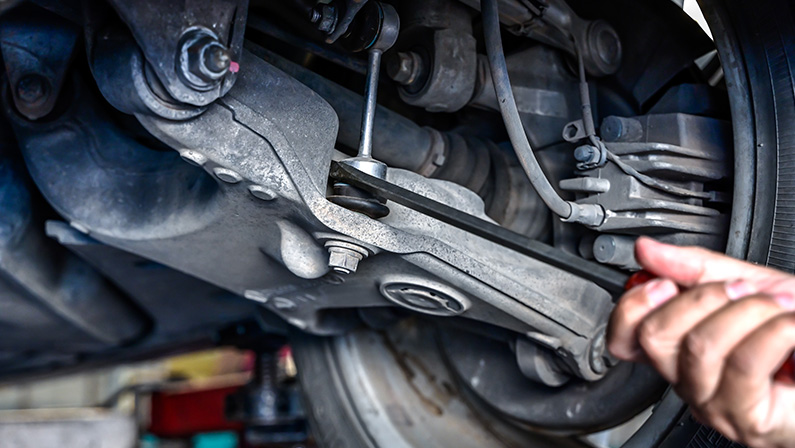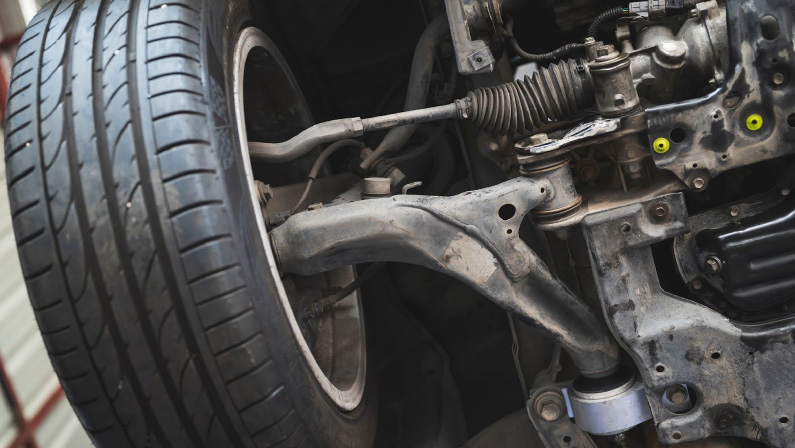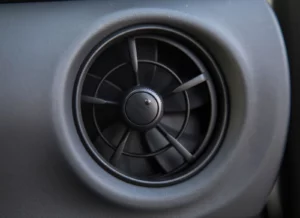A low car suspension can instantly transform a vehicle’s appearance and performance. Many car enthusiasts seek ways to effectively lower their suspension, whether for aesthetic appeal or improved handling. However, achieving the perfect balance between style and function requires careful planning and proper execution.
Before making modifications, it is essential to understand the methods, tools, and costs involved in lowering car suspensions. This guide covers everything you need to know to do so safely and maintain your car’s suspension for long-term performance.
What does it mean to lower a car’s suspension?
Lowering car suspension refers to modifying a vehicle’s suspension system to reduce its ride height. This process can enhance a car’s aerodynamics, stability, and overall driving experience. However, lower suspension requires careful consideration of ride comfort, ground clearance, and potential wear on other components. Using the right techniques and tools is important to ensure its safety and longevity.
What are the different methods to lower car suspension?

Lowering suspension can be done using several methods, each offering different benefits and levels of adjustability.
Here are some common approaches:
Lowering Springs
Lowering springs replace factory springs with shorter, stiffer ones, reducing the ride height. This method is cost-effective and provides a noticeable drop in height.
Coilover Suspension
Coilovers combine springs and shocks into a single unit, allowing adjustable ride height. They offer precise tuning for handling and comfort.
Air Suspension
Air suspension systems use airbags instead of traditional springs, offering adjustable ride height at the push of a button. This method provides flexibility but can be costly.
Drop Spindles
Drop spindles reposition the wheel mounting points without altering suspension geometry. This method maintains factory ride quality while lowering the car.
Cutting Springs (Not Recommended)
Some car owners cut factory springs to achieve a lower stance. However, this method can negatively impact ride quality and safety, making it an unreliable option.
What tools and equipment are needed for lowering suspension?
Before starting the process, gathering the right tools and equipment is essential. A suspension lowering kit can simplify the process and ensure a professional result.
1. Suspension Lowering Kit
A high-quality suspension lowering kit includes essential components such as springs, shocks, or coilovers, designed specifically for your vehicle model. Investing in a reliable kit ensures a proper fit and maintains optimal ride quality.
2. Jack and Jack Stands
A hydraulic jack and sturdy jack stands provide the necessary support when working underneath the vehicle. Using high-quality stands enhances safety by preventing the car from shifting during the modification process.
3. Wrenches and Socket Set
A complete wrench and socket set is necessary for removing and installing suspension components without damaging bolts or fasteners. Having a variety of socket sizes ensures compatibility with different suspension parts.
4. Torque Wrench
A torque wrench ensures that bolts and nuts are tightened to the manufacturer’s specifications. Over-tightening can damage components, while under-tightening may lead to loose or unsafe suspension parts.
5. Spring Compressor
A spring compressor is required when working with coil springs, allowing safe removal and installation. Without it, compressed springs can release unexpectedly, posing serious safety risks.
How Do You Lower a Car’s Suspension Safely?
Ensuring safety when lowering a car’s suspension is crucial to avoid damage and maintain drivability.
1. Research Your Vehicle’s Suspension System
Different cars have varying suspension setups. Understanding your car’s system helps determine the best-lowering method.
2. Follow Manufacturer Guidelines
Using manufacturer-recommended components and installation procedures ensures safety and prevents damage to other parts.
3. Get a Professional Alignment
After lowering the suspension, a professional wheel alignment is necessary to prevent uneven tire wear and handling issues.
What Are the Benefits of Lowering Car Suspension?
Lowering car suspension offers several advantages that enhance the driving experience.
Improved Handling
A lower center of gravity reduces body roll and enhances stability during cornering, making the car feel more planted on the road. This improvement is especially beneficial for high-speed driving and sharp turns, providing better control and responsiveness.
Enhanced Aesthetic Appeal
A lowered car looks sportier and more aggressive, giving it a sleek and modern appearance that stands out. Many car enthusiasts opt for this modification to achieve a more customized and performance-inspired look.
Better Aerodynamics
Reduced ride height minimizes air resistance, improving fuel efficiency and overall performance by allowing the car to cut through the air more smoothly. This can enhance speed and stability, particularly at highway speeds, making the vehicle more efficient.
What Are the Potential Drawbacks and Risks?
While lowering suspension has benefits, it also comes with potential downsides.
Reduced Ride Comfort
Lowering a car’s suspension often results in a firmer ride due to stiffer springs and shocks. This can make driving on rough or uneven roads more uncomfortable, as the suspension absorbs less impact.
Increased Tire and Suspension Wear
With reduced ride height, tires may experience uneven wear due to altered alignment angles. Additionally, suspension components like shocks and control arms endure more strain, potentially leading to quicker wear and more frequent replacements.
Limited Ground Clearance
A lowered car is more prone to scraping against speed bumps, potholes, and steep driveways. This increases the risk of undercarriage damage, which may affect essential components such as the exhaust system and oil pan.
How Much Does It Cost To Lower Your Car’s Suspension?

The cost of lowering a car’s suspension varies depending on the method used. Here’s an estimate:
Lowering Springs
A budget-friendly option ($200 – $600), lowering springs replace factory springs with shorter, stiffer versions. While they effectively reduce ride height and improve handling, they offer limited adjustability compared to other methods.
Coilovers
Coil-overs are a more advanced option ($800 – $2,500) that provides adjustable ride height and damping control. They are popular among enthusiasts who want precise handling, but they are more expensive due to their tunability and durability.
Air Suspension
Air suspension systems are the most flexible and premium option ($2,000 – $5,000). They allow drivers to adjust ride height at the push of a button. While they offer superior comfort and customization, they require complex installation and maintenance, making them the most expensive choice.
Drop Spindles
Drop spindles cost around $300-$700. This method lowers a vehicle by repositioning the wheel mounting points without altering suspension geometry. It maintains factory ride quality and alignment, making it a solid mid-range option, though installation may require additional modifications.
How Can You Maintain a Lowered Suspension for Longevity?
Proper maintenance ensures a lowered suspension remains in good condition for years.
Regularly Check Suspension Components
Inspect shocks, struts, and springs for signs of wear or damage to prevent unexpected failures. Addressing minor issues early can extend the lifespan of your suspension system and improve ride quality.
Monitor Tire Wear
Ensure proper tire alignment and rotate tires regularly to prevent uneven wear that can affect handling. Misalignment caused by a lower suspension can lead to premature tire replacements and added maintenance costs.
Avoid Rough Terrains
Driving carefully over bumps and potholes prevents unnecessary strain on the suspension system, reducing the risk of damage. If unavoidable, slow down and take extra caution to protect the lowered components from excessive impact.
Achieve the Perfect Stance with Expert Suspension Lowering

Lowering your car’s suspension can enhance its style, handling, and overall driving experience. A lower stance improves aerodynamics, stability, and cornering performance while giving your car a sleek, aggressive look. However, proper installation and maintenance are essential to ensure safety and longevity. By choosing the right method and following recommended precautions, you can enjoy a smooth and stylish ride.
For professional suspension-lowering services in Houston, TX, visit Status Automotive & Collision. Our skilled technicians ensure precise installation and alignment, giving your car the perfect stance. Contact us today!




